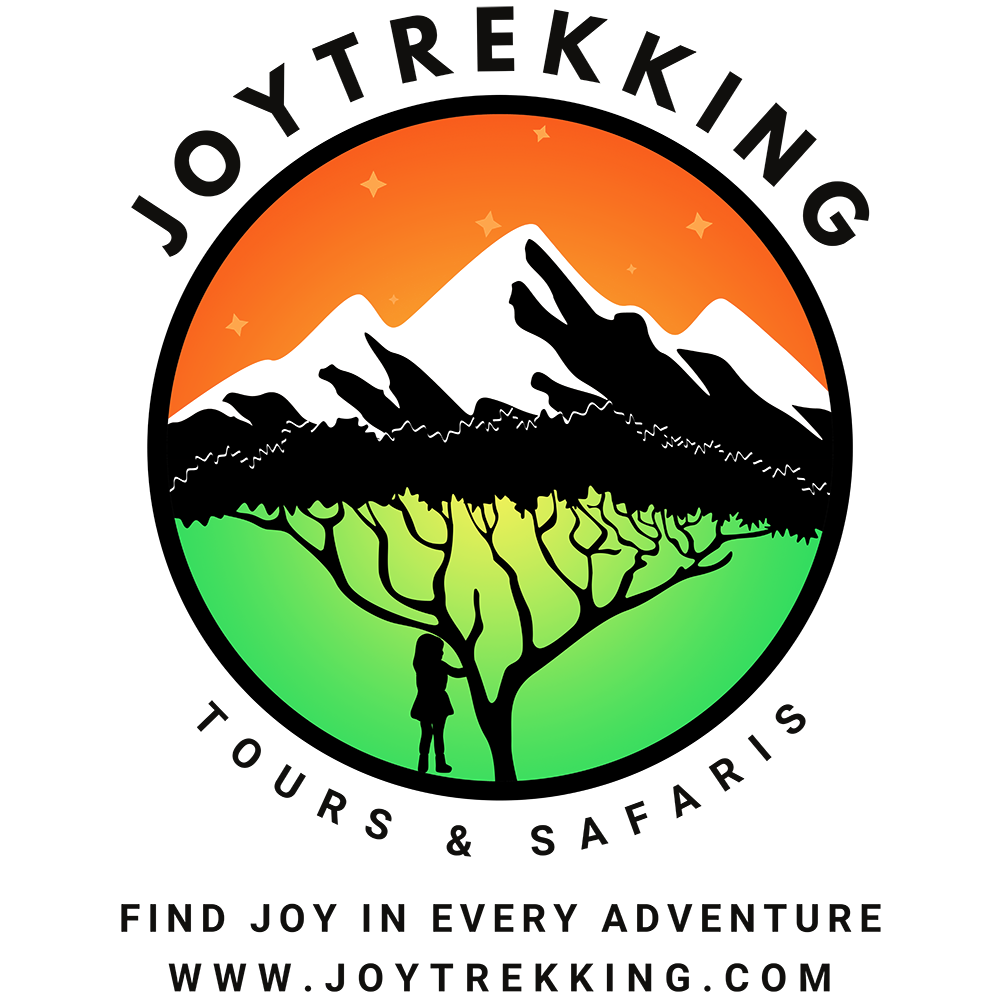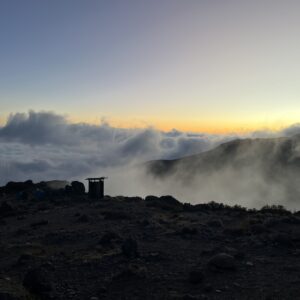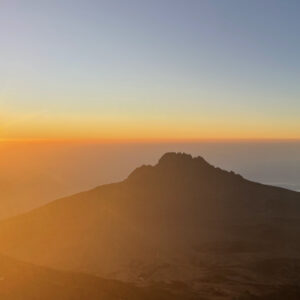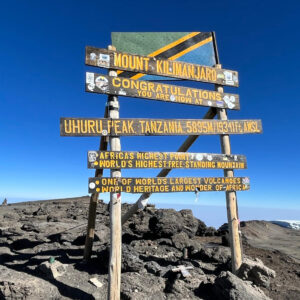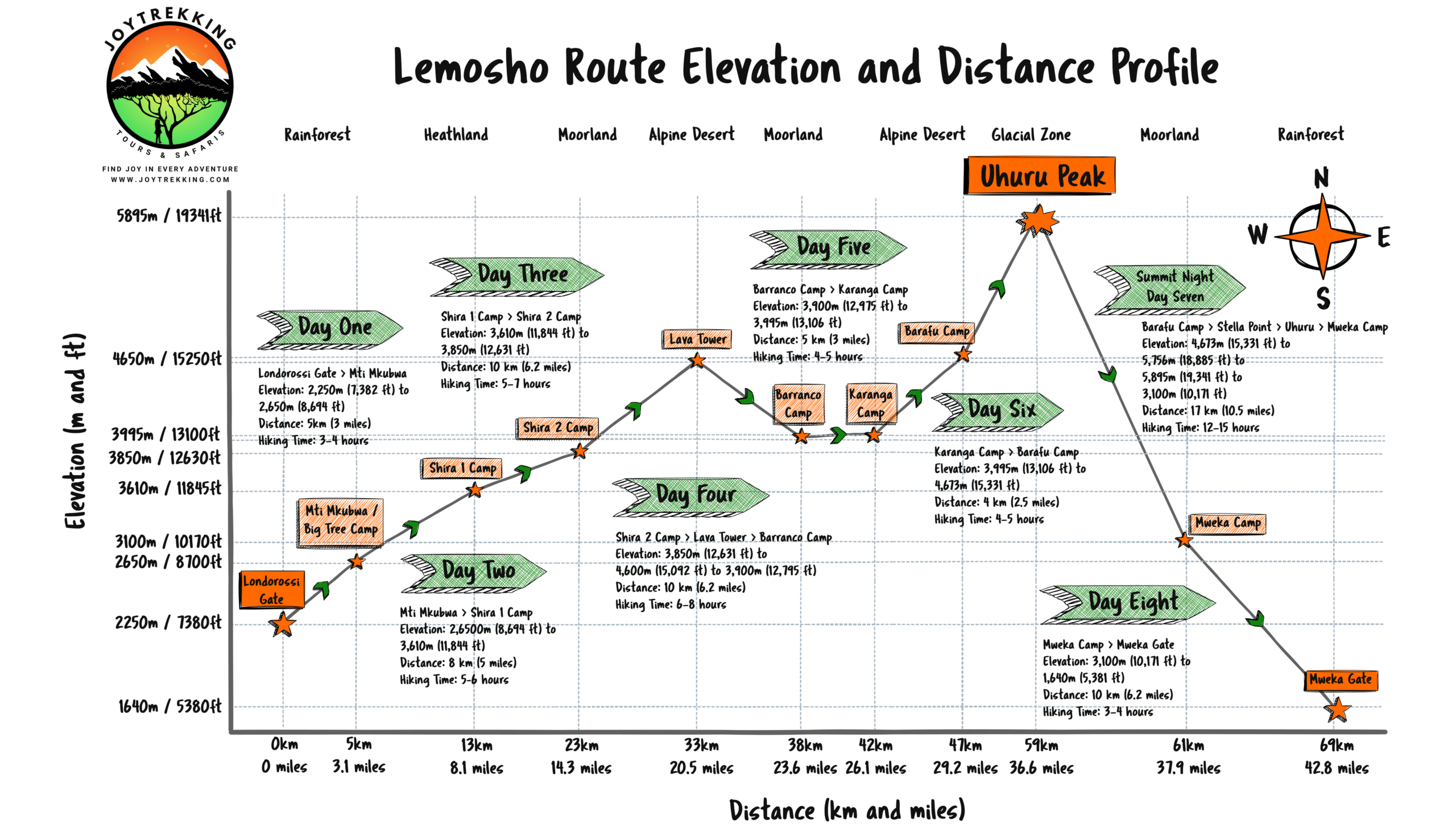The Lemosho Route is one of Kilimanjaro’s most scenic and rewarding treks, offering a gradual ascent that maximizes acclimatization and summit success rates. Spanning 8 days, this route takes you through lush rainforests, the vast Shira Plateau, and otherworldly high-altitude deserts before your final push to Uhuru Peak. Known for its breathtaking landscapes and diverse ecosystems, the Lemosho Route is perfect for those seeking a quieter trail with stunning views and a more immersive experience. With its balance of beauty and challenge, this route is a favorite for climbers aiming to savor every step of their Kilimanjaro journey.
Highlights
-
Panoramic Views from Shira Plateau
-
Diverse Landscapes and Ecosystems
-
Excellent Acclimatization Opportunities
-
Stunning Views at Lava Tower and Barranco Valley
-
Remote and Less Crowded Start
